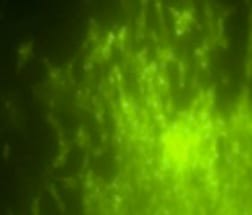Novelists often employ arsenic poisoning as a dramatic tool to kill off a character. But in real life, chronic exposure at non-deadly levels can still cause a bevy of harm, resulting in loss of muscle mass, memory disruption, impaired sensory abilities, damage to blood vessels and cancer.
The World Health Organization estimates that 200-300 million people, including 13 million Americans, are exposed to arsenic above the safety threshold of 10 parts per billion in their drinking water every year. But this limit is based on cancer risk among adults. Children might be at risk at even lower levels. Even worse, arsenic can pass through a mother’s placenta to the fetus, resulting in reduced fetal growth and long-term effects in children.
Despite arsenic being a well-known toxin, the mechanism and timeline of how it affects developing life is poorly understood. This prompted Lisa Bain, a Clemson University professor, to ask: How does chronic, low-level exposure to arsenic affect developing children, as well as sensitive embryos and fetuses?
Bain, who specializes in toxicology in the College of Science’s biological sciences department, was recently awarded a $366,371 grant from the National Institutes of Health to probe how arsenic exposure affects cell differentiation, the process by which cells change during development. Over a three-year period, Bain and several graduate students will trace how lab-raised cell cultures respond to just seven parts per billion of arsenic.
Mimic gestation
“The idea with this project is that by exposing undifferentiated cell lines to low levels of arsenic over 40 weeks, we can mimic the human gestation period,” said Bain, who has been studying arsenic’s effects on cells for close to a decade. “And by assessing the cultures weekly, we can determine if observed developmental changes persist over time.”
Bain’s team will seek to pinpoint the span of cellular development when undifferentiated cells transform into more specialized cells — such as neurons or muscle cells — and are most at risk of disruption from arsenic. During the course of normal development, stem cells change into precursor cells, then to progenitor cells and finally to adult cells. Previous research has established that acute arsenic exposure prevents this normal series of transformations. The transitions between stages is controlled by a set of proteins, called transcription factors, that bind to DNA and induce the next set of proteins to be expressed, which indicate what type of adult cell will develop.

Image Credit: Jim Melvin / Clemson University
“We’re interested in knowing where exactly does the impairment happen in this series of steps and why does it happen?” Bain said. “Which proteins are affected?”
Because the experiments will analyze undifferentiated cells that will ultimately develop into neurons or muscle cells, Bain’s work potentially offers insight into fetal outcomes regarding physical development, weight gain, memory and sensory abilities.
Bain will attempt to identify specific developmental time frames that might be more susceptible to arsenic’s adverse effects.
“Imagine if we could advise an at-risk pregnant woman that during a certain window of time she could protect her fetus by drinking only bottled water. Or imagine if we could provide her with a vitamin or other supplement to counteract the effects, similar to how pregnant women are advised to take folic acid to prevent certain birth defects.”
Once sensitive developmental periods are identified, Bain will examine whether impaired cells that have lost their ability to specialize can recover after the arsenic is removed.
“Previously, my lab has only looked at how arsenic exposure affects undifferentiated cells. We’ve never tried looking the other way to see if they can regain their ability to specialize.”
Widespread risk
While arsenic might sound like an exotic toxin, its risk to pregnant women and children is higher and more widespread than many people realize. Arsenic is found naturally in air, water and soil. Where bedrock is near the Earth’s surface, arsenic leaches into groundwater and can infiltrate drinking wells. Certain regions of the world, such as India, Bangladesh and Taiwan, are plagued by arsenic-contaminated wells.
Closer to home, regions such as the desert Southwest, Maine, New Hampshire, Minnesota and North Dakota must also guard against arsenic. The element’s toxic legacy also remains in the soils, where cotton farmers applied it long ago as a potent pesticide. Today, many of these former cotton fields produce rice and when the paddies are flooded, arsenic can be absorbed by the growing crops.
Bain hopes that one day the threat of arsenic exposure to pregnant women, and children, will be mitigated by realistic, timely interventions that erase or blunt the toxin’s negative outcomes on human health and development.
– T. DeLene Beeland is a freelance science writer based in Asheville, North Carolina.
Get in touch and we will connect you with the author or another expert.
Or email us at news@clemson.edu

